As the threat from manoeuvrable hypersonic missiles adds to the already vast array of ballistic and other missile threats, increasingly extensive and sophisticated space-based satellite constellations providing missile warning and tracking functionality are being deployed to bolster US missile defences for the protection of the US and its Allies.
This article examines the threats demanding effective missile defence by the West, and at some of the latest US space-based programme developments offering missile warning and tracking (MW/MT) intended to protect against such threats. The article also reviews the DOD’s recently-released strategy on the protection of current and future space-based MW/MT and related satellite assets.
Missile Threats
Threats posed by strategic and tactical ballistic, as well as hypersonic missiles, to the US and Allied nations constitute a real and present danger, as so acutely illustrated by recent geopolitical realities. The use of ballistic and hypersonic missiles at the tactical level in Ukraine – including the first combat use of Russia’s Kinzhal missile – together with Putin’s continued nuclear threat rhetoric, reminds us all of the dangers posed by such weapons. Added to this are the apparent nuclear test site expansion activities at Russia’s former nuclear test site on the Novaya Zemlya archipelago in the Arctic Ocean. This activity was detected by satellite in September 2023, suggesting possible preparations for future nuclear testing – a move which would throw the comprehensive nuclear-test-ban treaty into disarray. Taken together with Putin’s recent statement that the RS-28 Sarmat intercontinental ballistic missile (ICBM) is now operational, the missile threat from Russia appears significant.
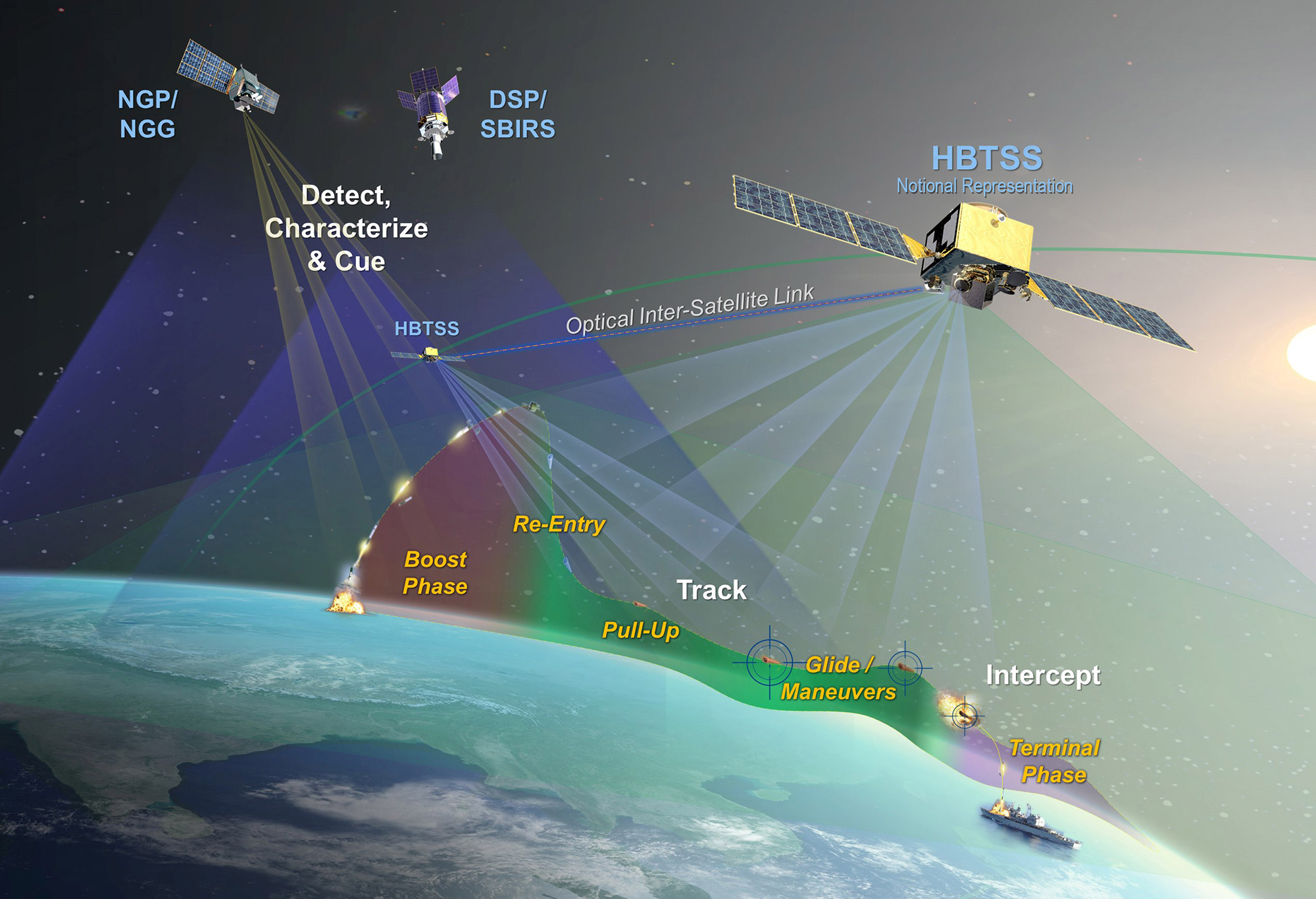
Credit: Northrop Grumman
North Korea’s nuclear arsenal and extensive ballistic missile inventory are also part of this global threat, as highlighted on 13 July 2023, with the country’s latest ballistic missile test of a Hwasong-18 ICBM. Iran, too, cannot be ignored, with its nuclear aspirations. According to the Center for Strategic and International Studies (CSIS), Iran is already in possession of the ‘most diverse missile arsenal in the Middle East, with thousands of ballistic and cruise missiles, some capable of striking as far as Israel and southeast Europe’. In early June 2023, Iran also unveiled a new medium-range ballistic missile dubbed ‘Fattah’, which is reported to have a range of 1,400 km and a maximum velocity of up to Mach 14. Added to these, China’s nuclear potential is growing, and its delivery systems are increasing in sophistication.
Space-Based Protection
To protect against such threats, complex space-based satellites and sensors have complemented the ground-based strategic defensive early-warning capabilities of the North American Aerospace Defence Command (NORAD) for years. This includes the Defence Support Programme (DSP) satellites from Northrop Grumman, which provide missile-launch detection, tracking and targeting information to command and control elements of the land-based system. Seeking the latest information on DSP satellites, a spokesperson for Northrop Grumman told ESD that, “Due to the critical nature of the technology, certain information regarding DSP will continue to be protected by enhanced security measures.
He are unable to speak to specifics at this time beyond what we have previously released.”
However, as missile technology has advanced and arsenals grown, the need for ever more complex, interconnected, resilient and overlapping space-based MW/MT assets, sensors and constellations has increased. One unfolding programme addressing these complex needs is the US Space Force Next-Generation Overhead Persistent Infra-Red (Next-Gen OPIR) constellation, which will eventually replace the current Space-Based Infra-Red System, SBIRS. Incidentally, SBIRS itself originally entered service to replace some DSP assets. Lockheed Martin and Northrop Grumman are working on the delivery of five Next-Gen OPIR space vehicles for the new programme; three from Lockheed Martin will be placed in a Geostationary Orbit (GEO) and are referred to as NGGs (Next Generation Geosynchronous), while two from Northrop Grumman, which will be placed in highly elliptical polar (HEP) orbits, are referred to as NGPs (NextGenPolar).
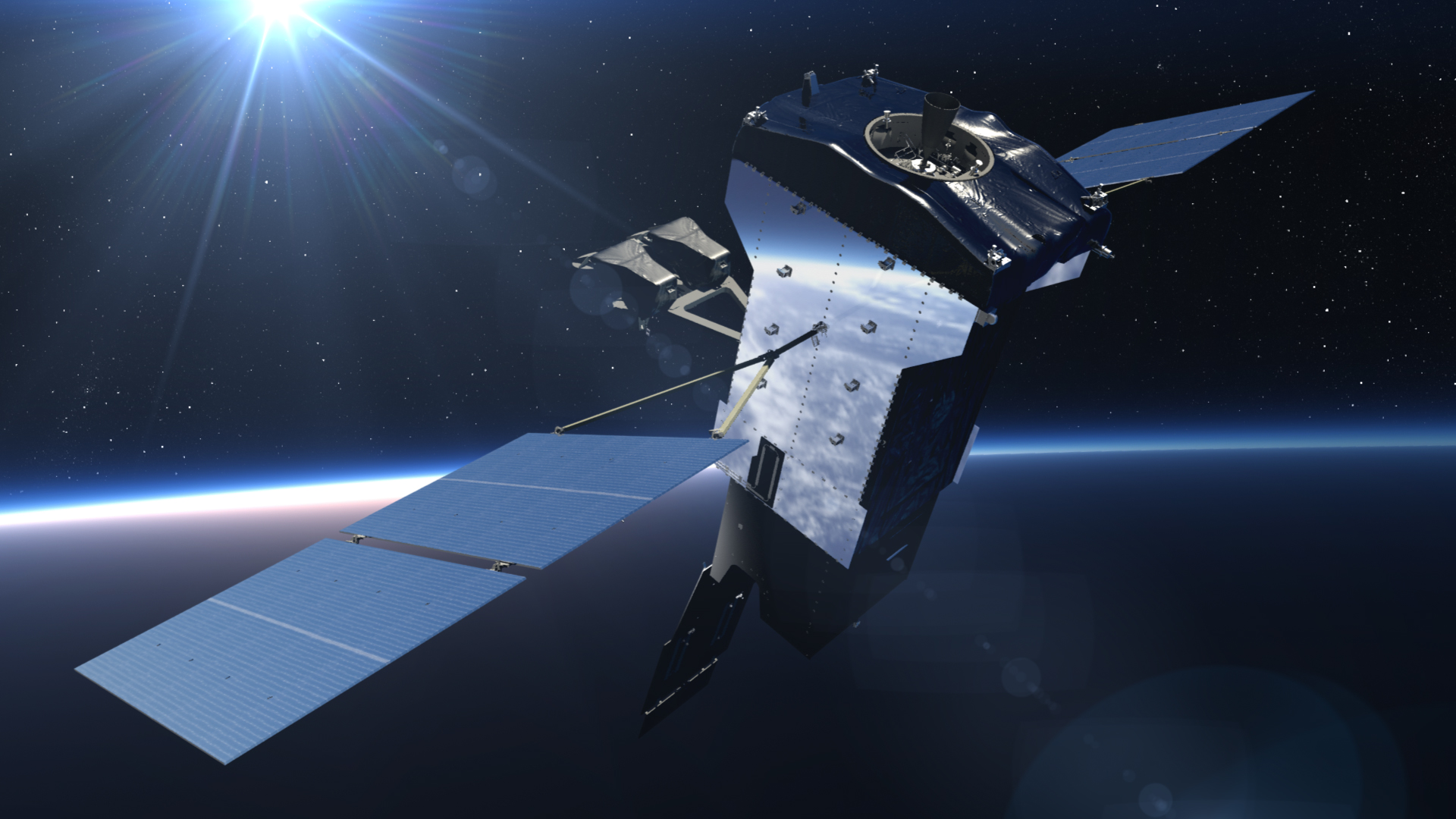
Credit: Lockheed Martin
Staying with the earlier, SBIRS programme for a moment, Lockheed Martin Space’s sixth and final SBIRS satellite, SBIRS GEO-6, was actually launched into GEO only in August 2022 and joined the Space Force SBIRS constellation to provide and maintain staring IR surveillance and missile warning capabilities. The company is SBIRS’s prime contractor and Northrop Grumman is payload supplier. In a press release, Lockheed Martin Space said the sixth satellite was “a stepping stone toward the resilient missile warning to be provided by SBIRS’s successor, the NGG system”, which it said, “like SBIRS GEO-5 and GEO-6, is based on the company’s modernised LM 2100 Combat Bus”. This delivers additional cyber hardening, resiliency, and enhanced spacecraft power, as well as improved propulsion and electronics. The company’s Vice President OPIR Mission Area, Michael Corriea, said at the time that the need for OPIR had ‘never been more critical’, with the statement emphasising this claim by stating ballistic missile technology had ‘proliferated around the world with over 1,000 missile launches tracked annually’. So, not only would SBIRS GEO-6 bolster current missile warning architecture, but its successor, NGG, would deliver even greater capacity and expanded coverage in its role.
As for Northrop Grumman’s NGP OPIR satellites, these will provide coverage over the Northern Hemisphere’s polar region from HEP orbits. According to company media sources, the two satellites will include IR sensors to “detect and track ballistic and hypersonic missiles”, together with an “enhanced communication system to transmit mission data to the ground, allowing decision-makers to identify IR heat signatures of incoming threats”. Resiliency features to “reduce vulnerabilities to counter-space and cyberattacks”, as well as having “protected, assured, survivable communications capabilities”, will also be aspects of each NGP’s make-up.
The HEP orbits of the two NGP space vehicles are crucial, because of the trans-polar routes being the flightpaths of choice for adversarial missiles attacking North America due to the shorter distances to reach their targets. And as satellites in GEO orbits have no direct line-of-sight over the poles due to the curvature of the Earth, coverage can only be achieved with satellites in HEP orbits.
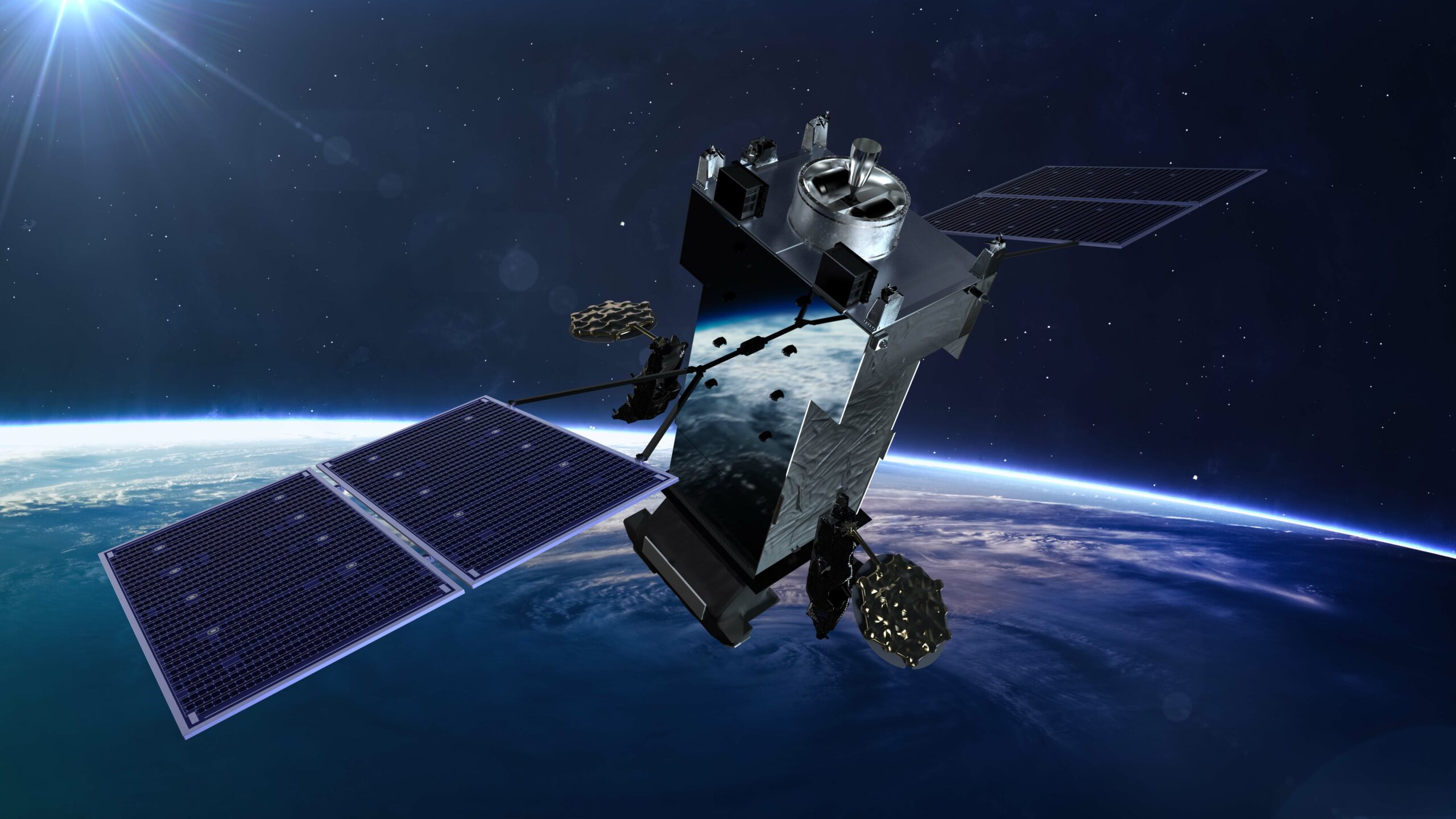
Credit: Lockheed Martin
In a Northrop Grumman simulation of an NGP missile-warning event over the polar regions, NGP assets will now become the first sensors to detect the launch and flight of an enemy missile, benefiting from improved OPIR performance over earlier systems. Once detected, real-time, on-board processing will immediately kick in to characterise the event, transmitting this along with missile warning, tracking and other information using its real-time downlink to the continental US. The two-satellite NGP constellation will, according to Northrop Grumman, ensure 24/7 direct LOS communications to ground-based command and control, and will help to prevent a Northern Hemisphere surprise polar missile attack on North America.
Participants and Programmes
Beyond the aforementioned programmes and industrial participants, the DOD has placed its other space-based missile warning and tracking manufacturing vested interests in the hands of other players, such as Boeing’s Millennium Space Systems, L3Harris, and Raytheon Intelligence & Space. Each are currently delivering space vehicles (and have done so in recent years), to other DOD missile warning and tracking programmes requiring sensors on orbit in different planes, from low Earth orbit (LEO) to medium Earth orbit (MEO) and beyond to geostationary GEO orbital positions, as well as high Earth orbit (HEO) positions.
Programmes such as the hypersonic and ballistic tracking space sensor (HBTSS) work for the Missile Defence Agency (MDA), the Space Development Agency’s (SDA) Proliferated Warfighter Space Architecture (PWSA) Programme, or the Wide Field of View (WFOV) Missile Warning Sensor for the US Space Force; these are just some of the ongoing activities involving these industry players.
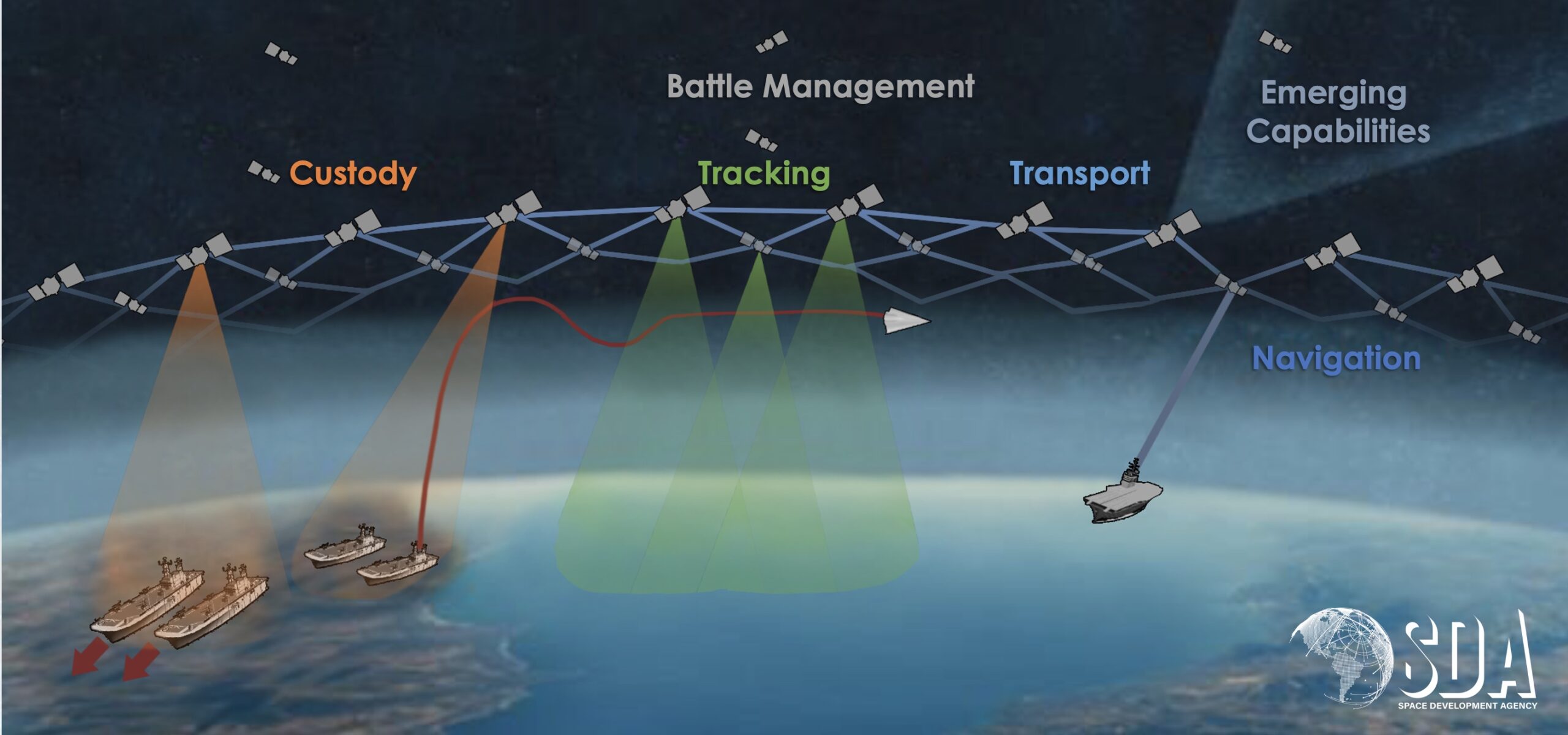
Credit: SDA
L3Harris, for example, is involved in a number of these programmes, including the MDA’s HBTSS Programme, for one, as is Northrop Grumman. L3Harris was awarded a contract in June 2023 to develop an IR sensor payload digital model for the MEO – Missile Track Custody (MTC) Epoch 1 programme – to support detection and tracking of hypersonic missiles for the Space Force’s future resilient MW/MT constellation. Millennium and Raytheon are also moving ahead with prototype space vehicle development for the programme, with a delivery date slated for 2026.
From the above, it is not hard to see how space has become an increasingly contested environment for both offensive and defensive actions. However, the mix of complex high-tech programmes mentioned, with their multi-layered, multi-orbit, optically-meshed-satellite approaches, advanced IR sensors and MW/MT capabilities, offer resilient design architectures that stand every chance of meeting and defeating the increasingly sophisticated, evasive and dangerous emerging missile threats.
While space precludes detailing all programmes and projects, ESD was able to catch up with the MDA and SDA to learn more about the latest developments regarding HTBSS and PWSA.
HBTSS Update
According to the MDA, the HBTSS programme is intended to deliver a global constellation of HBTSS tracking satellites that will provide continuous access to missile threats, whether ballistic or hypersonic, from launch to re-entry and/or flight termination, with the provision of fire control tracking data to the overall missile defence system’s command and control.
According to the agency, the two satellites of the HTBSS constellation will work together with land and sea-based radar, as well as “recently-deployed Space Force tracking satellites, to demonstrate how they can track hypersonic threats and provide targeting data for intercept”, adding that, “this demonstration will inform the future PWSA for the missile warning tracking defence mission”.
The MDA is said to be planning to launch its two prototype HBTSS satellites by the end of 2023 to demonstrate those aforementioned on-orbit capabilities of the system, and once that takes place successfully, HTBSS will, the agency says, become “part of a critical constellation of space sensors proliferated and operated by the Space Force, which will provide increased capability to track targets and intercept hypersonic threats as missile threats evolve”. At that time, the programme is expected to be handed over to the SDA.
ESD magazine was able to catch up with the MDA for a brief update on HBTSS’s current status and whether the programme is on target to begin on-orbit sensor testing by the end of the year. MDA spokesperson, Heather Cavaliere, told ESD that, “For the current phase of the HBTSS programme, (On-Orbit Prototype Demonstration), MDA awarded agreements to both L3Harris Technologies, (L3H) and Northrop Grumman Corporation (NGC) in January 2021. Each performer is developing on-orbit prototype demonstration satellites that will be launched no earlier than mid-December 2023. Launch will be followed by on-orbit testing to test, characterise, and validate the HBTSS performance.” Cavaliere added that, “HBTSS is responsible for detecting and tracking the threat and transmitting its data to the command and control element of the Missile Defence System.”
As to how the MDA’s collaborative efforts with the SDA are progressing to ensure US Forces – USAF/US Space Force, etc – have the optimum space-based missile warning capabilities in place as soon as possible, particularly in view of what has been seen in Ukraine and the missile developments being made by various US adversaries, Cavaliere responded, saying that, “The MDA is collaborating with the US Space Force’s SDA and Space Systems Command (SSC) to develop HBTSS as a prototype Overhead Persistent Infrared (OPIR) sensor, uniquely providing fire-control-quality data. Operationally, the HBTSS fire-control capability will be part of SDA’s PWSA and will detect hypersonic, ballistic, and other advanced threats much sooner than terrestrial radars, providing hypersonic threat-tracking data for hand-off through linked missile defence weapons.”
PWSA Update
Which brings us to Proliferated Warfighter Space Architecture (PWSA) developments. This is an SDA programme about which the company announced in April 2023 the successful initial launch of the 10 satellites comprising the programme’s Tranche 0 (T0), the Transport and Tracking Layer satellites, which will demonstrate the low-latency communication links to support the warfighter with a resilient network of integrated capabilities, including tracking of advanced missile threats from LEO.
For the latest update on the programme, ESD caught up with the SDA’s Deputy Chief, Strategic Engagement, Jonathan Withington, who said, “The PWSA will track the most advanced threats both now and in the future. The Tracking Layer will integrate with the Transport Layer’s low-latency meshed communication network, enabling conventional and advanced missile tracking from proliferated LEO, adding capabilities through spiral development to future generations as the threat evolves.”
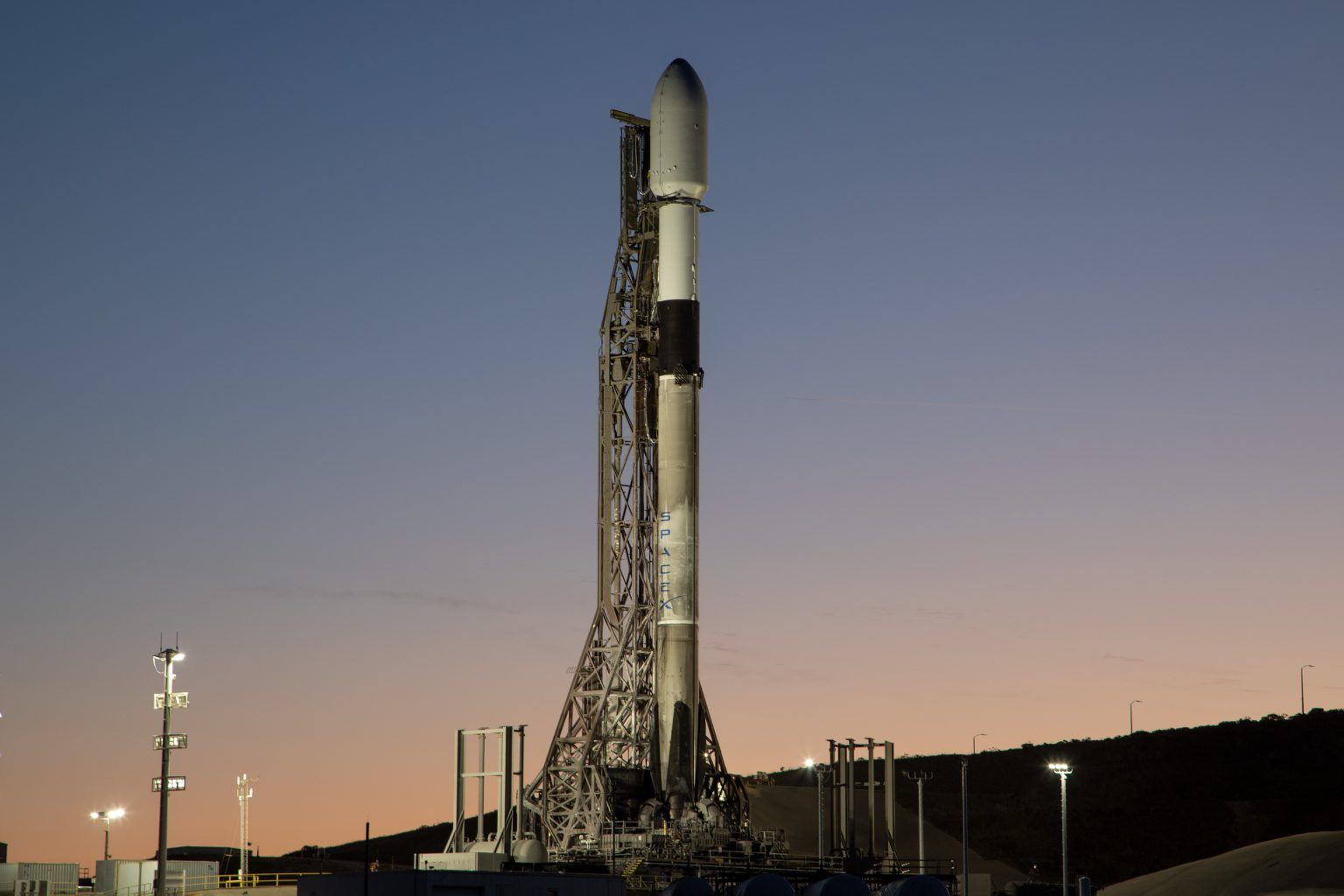
Credit: SDA
Withington added, “The development and fielding of the PWSA is well underway with Tranche 0’s first two launches delivering 23 of the planned 27 satellites on orbit, with a third launch planned for later this year. The first two Tranche 0 Tracking satellites achieved ‘first light’ just over 60 days after launch. The SDA is also on track to field the first operational generation of the PWSA, Tranche 1, beginning in late 2024.”
Another SDA official added some background for ESD, saying, “Tranche 0 (T0), the Warfighter Immersion Tranche, demonstrates the feasibility of a proliferated architecture in cost, schedule, and scalability toward necessary performance of beyond-line-of-sight targeting and advanced missile detection and tracking. Once completed, T0 will consist of 28 satellites – 20 Transport Layer satellites and eight Tracking Layer satellites.”
The official continued, “The agency is pleased with the initial operation of the first two groups of satellites launched in April 2023 and September 2023,” adding, “as they continue to go through test and checkout. SDA launched four Tracking satellites over the first two launches. Later this year, SDA will launch the final four T0 Tracking satellites with the MDA’s HBTSS satellites. This launch collaboration allows for greater synergy between the PWSA’s MW/MT sensors and MDA’s HBTSS missile defence sensor as they conduct demonstrations for the future MW/MT/missile defence hybrid architecture.”
The SDA has begun the build phase of Tranche 1 satellites and still plans to field the first operational generation of the PWSA beginning in late 2024. “The T1 Tracking Layer,” the official said, “will provide near global mono coverage for MW/MT with launches starting in 2025. The T2 Tracking Layer is in source selection and will provide near global stereo coverage for MW/MT and preliminary missile defence capability based on lessons learned from T0, HBTSS, and T1. T1 Tracking will be able to sense and enable operational responsiveness to the newest ballistic and hypersonic missile threats. T2 Tracking will continue to improve sensitivity and stay ahead of future threats.” The SDA official concluded by confirming that Tranche 1 will include approximately 150 Transport and Tracking satellites.
In the SDA press statement at the time of the April launch, SDA’s director, Derek Tournear, said, “Through this launch, we’ve demonstrated that SDA can keep a schedule to deliver enhanced capabilities every two years. This revolutionary approach is enabled by growth in the commercial marketplace, allowing the PWSA to move forward to deliver warfighting capabilities in each future tranche.” The agency itself has stated that its “programmes provide an integral part of the national security hybrid space architecture in the areas of communications, data transport, and missile warning’, and that its ‘unique acquisition strategy… enables faster and cheaper capability delivery by designing and rapidly deploying a threat-driven, resilient constellation of small satellites in LEO”.
Protecting MW/MT Space Assets – Policy Review
Placing a lot of expensive satellites in space is one thing, but when it comes to threats to, and protection of, those MW/MT and other space-based assets, the DOD’s mid-September-released ‘Space Policy Review and Strategy on the Protection of Satellites’, addresses such issues.
The document begins by highlighting Chinese and Russian threats in the space security environment over the next five years. In the first instance, it underscores China’s efforts to expand its own comprehensive space-based architecture, which, it says, already comprises “roughly half of the world’s space-based intelligence, surveillance, and reconnaissance (ISR) satellites”. Of threats to US and Allied satellites, it adds that the People’s Liberation Army (PLA) can be expected to use counterspace systems to destroy, deceive or suppress friendly satellites and sensors, and these will be used along with cyberwarfare and direct-ascent anti-satellite (DA-ASAT) missiles; according to the review, the US expects the PLA will eventually develop the latter beyond just current capabilities of targeting LEO assets, and be able to hit GEO assets, also.

Credit: Lockheed Martin
As for Russia, whose extensive use, as mentioned earlier, of ballistic missiles and introduction of hypersonic systems in its war on Ukraine, have reminded today’s world of the terrible nature of missile warfare, the country does have “a smaller fleet of satellites than China”, according to the policy document, though does, it adds, operate “some of the world’s most capable individual ISR satellites for optical imagery, radar imagery, signals intelligence, and missile warning”.
However, where the Russian threat to US and Allied MW/MT and other space-based assets comes from, according to the policy document, is the development, testing and fielding “of reversible and irreversible counterspace systems to degrade or deny US space-based services”, including “jamming and cyberspace capabilities, directed energy weapons, on-orbit capabilities, and ground-based DA-ASAT missile capabilities”.
In fact, Russia’s DA-ASAT competencies were demonstrated on 15 November 2021, when Russia destroyed one of its own obsolete satellites, reportedly using an A-235 PL-19 anti-ballistic/anti-satellite missile. In a press statement at the time, US Secretary of State, Anthony Blinken, said, “This test has so far generated over 1,500 pieces of trackable orbital debris and will likely generate hundreds of thousands of pieces of smaller orbital debris. The long-lived debris created by this dangerous and irresponsible test will now threaten satellites and other space objects that are vital to all nations’ security, economic, and scientific interests, for decades to come.” However, it is worth noting that the US, China, and India have all also previously developed, and tested, DA-ASAT capabilities.
In order to protect MW/MT satellite systems and sensors, the DOD’s policy review and strategy states that “resilience” would be prioritised as the key method of “denying adversaries the benefits of attack in space”, and that this would be achieved through “a DOD space architecture shift”, moving away, where possible, “from dependence on high-value, specialised satellites to resilient-by-design architectures”, a transition, it added, that was “already underway”. Indeed, according to the document, the first area the DOD wants redeveloped under this approach is MW/MT.
It said that an assessment had been made of “…architectures designed to meet future warfighting performance needs, establish resilience against modern military threats, and ensure cost parameters…resulting in recommendations on numbers of satellites and diversifying capabilities across orbital regimes.” It adds, “Ongoing force design studies include: fire control to address long-range threats; tactical ISR to enable forward operations; a space data network to ensure data throughout for decision-making and battle management; and protect and defend operations to protect vital infrastructure and space-based capabilities”.

Credit: Northrop Grumman
The review also addresses threats to space-based assets from enemy systems designed to manipulate them physically from their orbits, or deny their operational effectiveness in other ways, such as jamming, with such mitigating actions as movement and manoeuvre options for their protection. Non-adversarial space and terrestrial natural weather events must also be considered in protecting space-based MW/MT and other systems. The review does not forget threats from cyberspace, noting that, “cybersecurity also plays a key role in improving the resilience of US space architectures” with the hardening of networks against cyber-attacks cited as “a priority effort”.
Underpinning the review’s sentiments on MW/MT asset protection are budgetary commitments that support the resilient-by-design approach, with the FY 2024 budget set to devote USD 5 Bn for the development of “new proliferated resilient MW/MT architectures, including next-generation OPIR space capabilities”, with accompanying ground systems that together will “track an increased range of threats, including hypersonic and manoeuvrable weapons”.
In addition, the FY2024 budget also requests that USD 481 M be allocated to “ground and space-based sensors, deep space radar, and ground-based optical system projects” that can alert and warn of threats to space systems, and in so doing “improve the capability and resilience of DOD SDA”.
The review concludes by citing five capabilities, seen as priorities by Commander, USSPACECOM, if the recommendations in the review document are to be achieved. These comprise: resilient command and control, integrated space fires and protection, an agile EW architecture, enhanced battlefield awareness in space, and robust cyber defence capabilities.
Tim Guest


